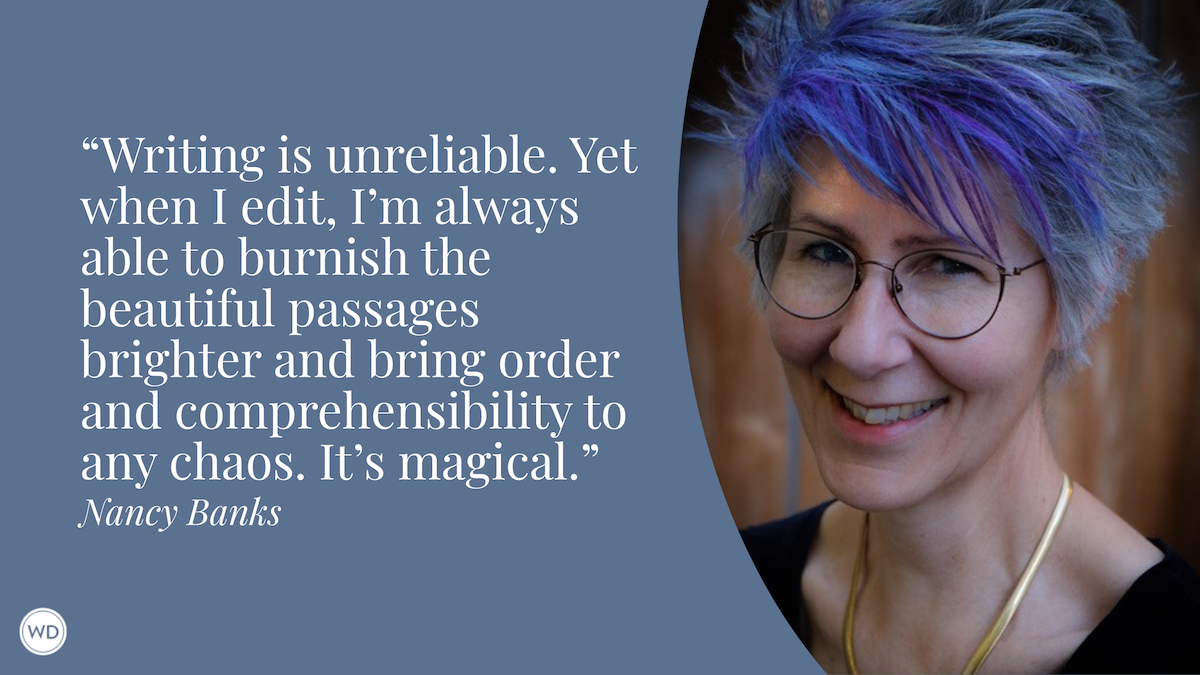How to Turn Your Family Folklore Into Historical Fiction
Author Melora Fern shares a three-step process on how to turn your family folklore into compelling historical fiction.
When I first discovered the box of mementos my Grandma Verna had saved documenting her adventures traveling with the Chautauqua circuit as a musical whistler, I knew I wanted to write her story. However, I soon discovered I didn’t know enough to accurately represent her. She was no longer around to give me the answers I needed.
That’s when I decided to write a fictionalized book inspired by her story. After many rough drafts, endless edits, and lots of creative writing, I wrote the manuscript that is now my debut historical fiction novel published by Sibylline Press: Whistling Women and Crowing Hens.
Do you have a family story, figure, or folklore you’re itching to write about? I’ve learned a lot about weaving family stories into fiction, and I hope you’ll find these lessons useful if you’re starting this journey.
To begin, gather all you can about your family’s specific story.
Use old photographs, scrapbooks, newspaper articles, and letters if you have them. Read through these carefully with an eye for the heart of your story, which may be different from the folklore you’ve been told all these years.
If you can, interview living family members to get their perspective around the family folklore or person that has inspired your interest. Do some preliminary research to learn about the era surrounding your family’s story. If you’re focusing on a particular person, Google their name to see what comes up and be sure to scroll past the first page. Sometimes the good bits are in the pages that don't rank as high in SEO!
For example, my Grandmother Verna had saved a few Swarthmore Chautauqua circuit brochures. I had no idea what “Chautauqua” was so I spent days reading blogs, dissertations, newspaper and magazine articles, and more. I knew my grandmother was a member of the Versatile Quintet for her Chautauqua circuit but I needed to do more research to understand how the quintet worked together, where they stayed while traveling, etc. The Versatile Quintet characters began to form in my mind, sparked by the brochures and all that I had read through my research.
Next, start developing the characters for your novel based on the key people in your family’s story.
You might decide that the POV is different from how the family story has been told all these years. You’ll need to identify your protagonist(s) and antagonist(s) or create those characters. The facts can give you a framework for your story, but you’re going to need to add splashes of fictional color to make your story sing! Most people’s lives don’t follow the classic “hero’s journey,” so you’ll have to fictionalize how your main character changes and grows in your story.
This is where your creative ideas and “what ifs” can be used to enhance each character. I recommend writing out character sheets for each person in your story. You can use what you know from looking at photographs to build physical descriptions. Maybe you know a bit about their personality and mannerisms from what you’ve heard from your family. Then you can add invented characteristics to make each character believable and well-rounded. Most family stories don’t include the emotions or the intentions of the people involved. So, you’ll need to consider the motivations for your fictionalized characters, too. You may have to simplify facts in some places and embellish in others!
When I started writing, I wanted my protagonist, Bertha (Birdie) Stauffer, to have seven siblings like my Grandmother Verna. After writing a few scenes, I realized that including so many supporting characters muddled the story. So, I changed it so Birdie had only two siblings, a sister and a brother. I used characteristics from all of my grandma’s siblings and several things I made up to create these and other characters in my novel. It took practice and much editing to figure out what facts were important to keep and which ones I didn’t need for my story. And it was challenging at first—I had to admit and honestly own that Birdie was not Verna. Once I did that, I was able to write more freely and the story flowed much better.
Next, you’ll need to lay out your plot.
Most family stories are enough to get your idea going, but you’ll have to add more tension and higher stakes to get to a complete novel. This is where I found myself doing the most research. For me, it was important to stick to historic timelines, cultures, and events that actually happened in the era of my story.
I’m not a big plotter, so I spent time playing “what if” this happens to my protagonist to move the story along. I knew my story would end differently than my Grandmother Verna’s life story. Based on my research, many women in the 1920s were experiencing new freedoms and finding their voices for the first time. I decided my protagonist, Birdie, would find her independence and voice—so I used the research to create a storyline of how she went from a naïve, oppressed small-town girl to an independent modern woman. I was able to keep in the facts that first intrigued me about musical whistling and Chautauqua circuits yet build on them with my research and creative writing.
Every family has stories that have been passed down through the generations. These stories can enrich our fiction with little known facts or events that were not included in our history books. Creative writers have been taught the “write what you know” adage for decades. I’d like to add to that—write what you’ve been told—because it's rewarding and interesting to write your family history into its own story!
Check out Melora Fern's Whistling Women and Crowing Hens here:
(WD uses affiliate links)









